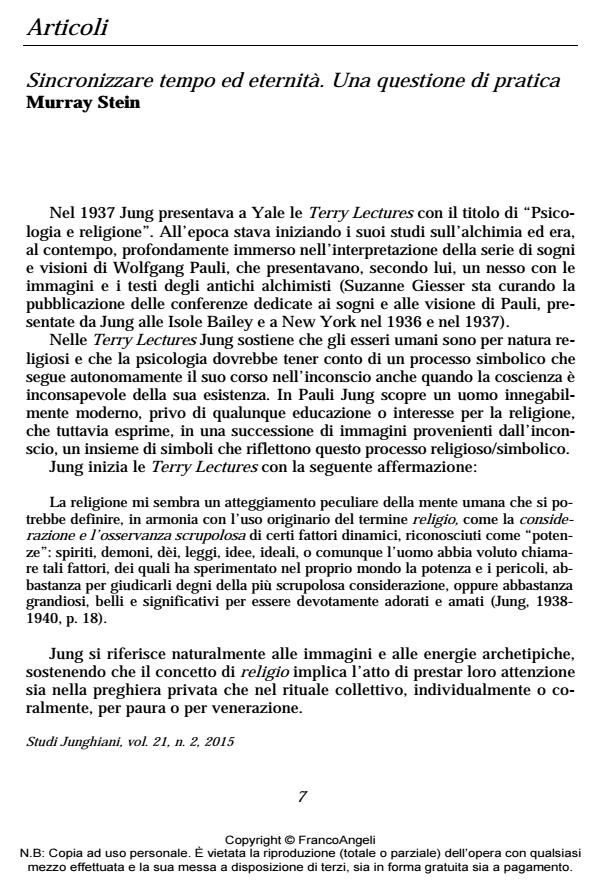Sincronizzare tempo ed eternità. Una questione di pratica
Titolo Rivista STUDI JUNGHIANI
Autori/Curatori Murray Stein
Anno di pubblicazione 2016 Fascicolo 2015/42
Lingua Italiano Numero pagine 17 P. 7-23 Dimensione file 112 KB
DOI 10.3280/JUN2015-042002
Il DOI è il codice a barre della proprietà intellettuale: per saperne di più
clicca qui
Qui sotto puoi vedere in anteprima la prima pagina di questo articolo.
Se questo articolo ti interessa, lo puoi acquistare (e scaricare in formato pdf) seguendo le facili indicazioni per acquistare il download credit. Acquista Download Credits per scaricare questo Articolo in formato PDF

FrancoAngeli è membro della Publishers International Linking Association, Inc (PILA)associazione indipendente e non profit per facilitare (attraverso i servizi tecnologici implementati da CrossRef.org) l’accesso degli studiosi ai contenuti digitali nelle pubblicazioni professionali e scientifiche
L’autore cerca di illustrare la concezione di Jung dell’interfaccia tra tempo ed eternità nel sé. Allo scopo, partendo dal commento di Jung sula visione dell’"orologio universale" di Wolfgang Pauli, si sofferma sull’immaginazione attiva di Pauli intitolata Lezione di Piano e dedicata a M.-L. von Franz. L’articolo è una meditazione sulla natura del tempo, dell’e¬ter¬ni¬tà e della loro interazione psicologica nel processo di individuazione. Temi di grande rilevanza per il lavoro clinico.
Parole chiave:Tempo, eternità, Wolfgang Pauli, sincronicità, compensazione
Murray Stein, Sincronizzare tempo ed eternità. Una questione di pratica in "STUDI JUNGHIANI" 42/2015, pp 7-23, DOI: 10.3280/JUN2015-042002